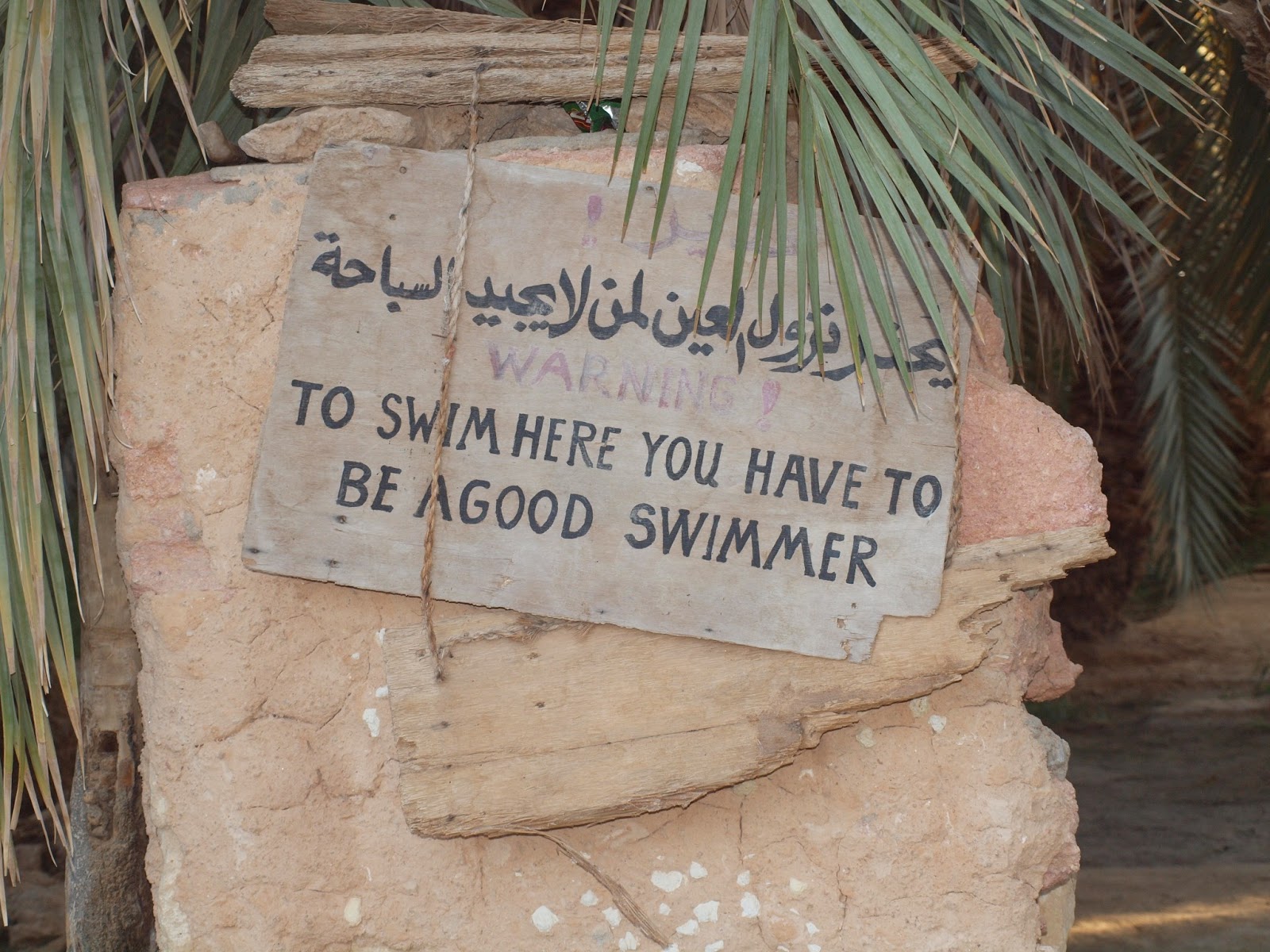We visited Siwa in the Western desert, on the edge of the Great Sand Sea, what we commonly think of as the Sahara. The seeming endless expanse continues for 72000 sq km - roughly the size of Ireland - and a region that has yet to be fully explored. The Siwa Oasis is hundreds of kilometers from any other settlement -- a nine hour drive from Cairo. .
on the way we stopped at a cold lake.
then stopped on top of a dune waiting for the sun to set over the horizon.
 The sculptured shapes of the wind blown sand captures one's imagination. It is hard to conceptualize that this was once an inland sea, yet the imbedded shells tell the story.
The sculptured shapes of the wind blown sand captures one's imagination. It is hard to conceptualize that this was once an inland sea, yet the imbedded shells tell the story.

The ever present winds create constantly evolving patterns on the sand surface; the rocks casting shadows in the golden light just before the sun begins to set.
An oasis is an amazing phenomenon. Where there is no water the desert is an
endless wasteland. The water seeping
into the oasis produces an agricultural diamond, Siwa is rich with date, olive and fig orchards along with the occasional apricot and pomegranate.
Irrigation canals have been used for hundreds of years to divert the flow of water -- the construction of new ones are similar to historical versions.
What better way to experience the countryside than by donkey cart, the same mode of transportation which has been used in the area for thousands of years. The donkeys here seem to have a blessed life compared to their Cairo counterparts.
One of the destinations was a lake where we awaited the sunset, after driving beyond the orchards and past the salt flats, were salt is extracted from the saline waters.
Swim holes have been created to capitalize on the water sources, some icy cold and some almost too hot to plunge into; the water continuously flowing from deep in the earth. Evidently the hole shown is more than 3 meters deep.
On our way to Siwa, we were told by our guide to be very careful to dress modestly at all times, even if that meant having to wear our clothing in the pools and lakes. Sexual assaults and advances are apparently commonplace. The Chinese girl above, at 'Cleopatra's Bath' is being hotly pursued by on of the locals.
History is at your fingertips here. Alexander the Great was said to have visited a temple, whose ruins remain, to have his fortune told, just before his death The hills remain spotted with ancient tombs which were plundered over the centuries.
The outline of a 12th century fort dominates the skyline of the busy, noisy town. The architectural methods are clearly seen, with wood and rope supporting the structure, which was created from the sand. There is less rain here than in arid Cairo, so the erosion of structures by water is pretty much non-existent.
Keep in mind that travelling in Egypt means passing through endless desert terrain, even though this trip was on roads that have a paved, albeit washboard surface . What we saw from Cairo to Siwa was flat, generally rocky, and unvaried in hue except for mile after mile of colourful bags of garbage thrown everywhere. Halfway back, just as we commented on the fact that we had not seen any camels even though we had viewed the crossing signs, we passed a small herd.
As I photographed them forming into a line to head off into the horizon, I glanced down. And what should appear before my astonished eyes but the whitewashed bones of what seemed to be an entire skeleton, laying on the surface of the sand.
On our way back the long trip was broken by a two day stay in Marsa Matrouh on the Meditteranean, a bustling summer escape for wealthy Egyptians. Where else would you find a McDonalds overlooking the sea? Like in Siwa, any form of alcoholic drink was non-existent in these strict Muslim areas.

























































